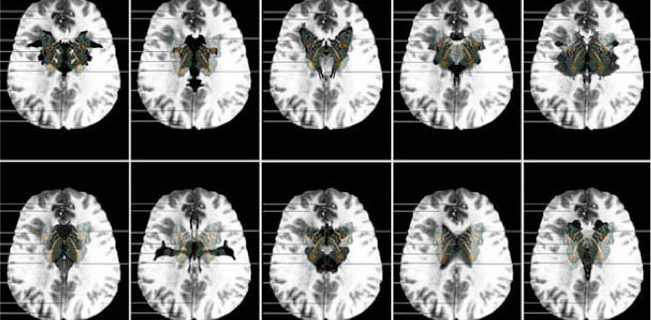The topic of this week, Neuroscience and Art, is interesting because it is a new page for me to realize more about the relationship of consciousness and art. I am not surprised that the human brain is composed of twenty-seven separate organs, and they localize in specific regions of the brain. Therefore, as stated, any of human behavior is dependent. This proves that some parts of the brain can be bigger while you are expert at handling some particular subjects, such as math, sport, or literature, because those particular parts are used more than the others. Yet, I am surprised about the saying of metaphor from a great artist and scientist, Santiago Romon y Cajal, he said “neurons are as mysterious butterflies of the soul," which is referred in one of the video of the lectures.


Wings of these butterflies, the dendrites were traditionally considered as passive integrator of synaptic information (Cajal). Indeed, the picture is so beautiful and I have never thought that way- our perception can be shaped to be a different butterfly. The way, in which we can see effectively that how neuroscience can be twisted together with art, is the pictures of scan- FMRI butterfly (2008), which were created by the artist, Suzanne Anker. This scanning work represented the idea that how modern brain science has penetrated popular culture. She explained this works as “a way to picture a thought…”
It is kind of a cultural equivalent that art creates metaphors which make science more transparent for the non-scientists. When art meet neuroscience, it is amazing that something invisible, such as our consciousness, can be visualized to see how neural networks enable us to think, act, and love. By drawing the beautiful pictures of neurons in which the neuroscientists observed under the microscope, such the artworks would facilitate the understanding of neuronal theory, which has been stated by Cajal that “the connection between neurons is contiguous rather than continuous.” Thus, there is a saying from him, “There can be no doubt, only artists are attracted to science” because art and science exist side by side and play a part together.
Neuroscience not only links with paper artworks but also can be the creatures of fine jewelry or silver sculptures. For example, Luke Maninov Hammond, a contemporary jeweler and neuroscience imaging specialist, contributes jewelrys and sculptures that inspired by neuroscience. And he is uniquely positioned as a scientist-artist who has expertise in neuroimaging. Isn’t it incredible that we can apply neuroscience as an intellectual ready-made to understand art, and explore more about human nature!
References:
Anker, Suzanne. "Bio Art." Suzanne Anker. Suzanneanker.com, n.d. Web. 14 May 2017. <http://suzanneanker.com/>
Frazzetto, Giovanni, and Suzanne Anker. "Neuroculture." Nature Reviews Neuroscience 10.11 (2009): 815-21. Web.
Hammond, Luck Maninov. "Images by Lukemaninov." Luke Maninov Hammond (@lukemaninov) | Instagram Photos and Videos. Pictaram, n.d. Web. 14 May 2017.
Noë, Alva. "Art and the Limits of Neuroscience." The New York Times. The New York Times, 04 Dec. 2011. Web. 14 May 2017.
Regine. "BRAINWAVE: Common Senses." We Make Money Not Art. We-make-money-not-art.com, 26 Mar. 2008. Web. 14 May 2017. <http://we-make-money-not-art.com/brainwave_common_senses/>
Vesna, Victoria. "Neuroscience-pt1.mov." YouTube. YouTube, 17 May 2012. Web. 14 May 2017.
Vesna, Victoria. "Mind Intro." YouTube. YouTube, 26 Mar. 2012. Web. 14 May 2017.
Awesome job!
ReplyDelete